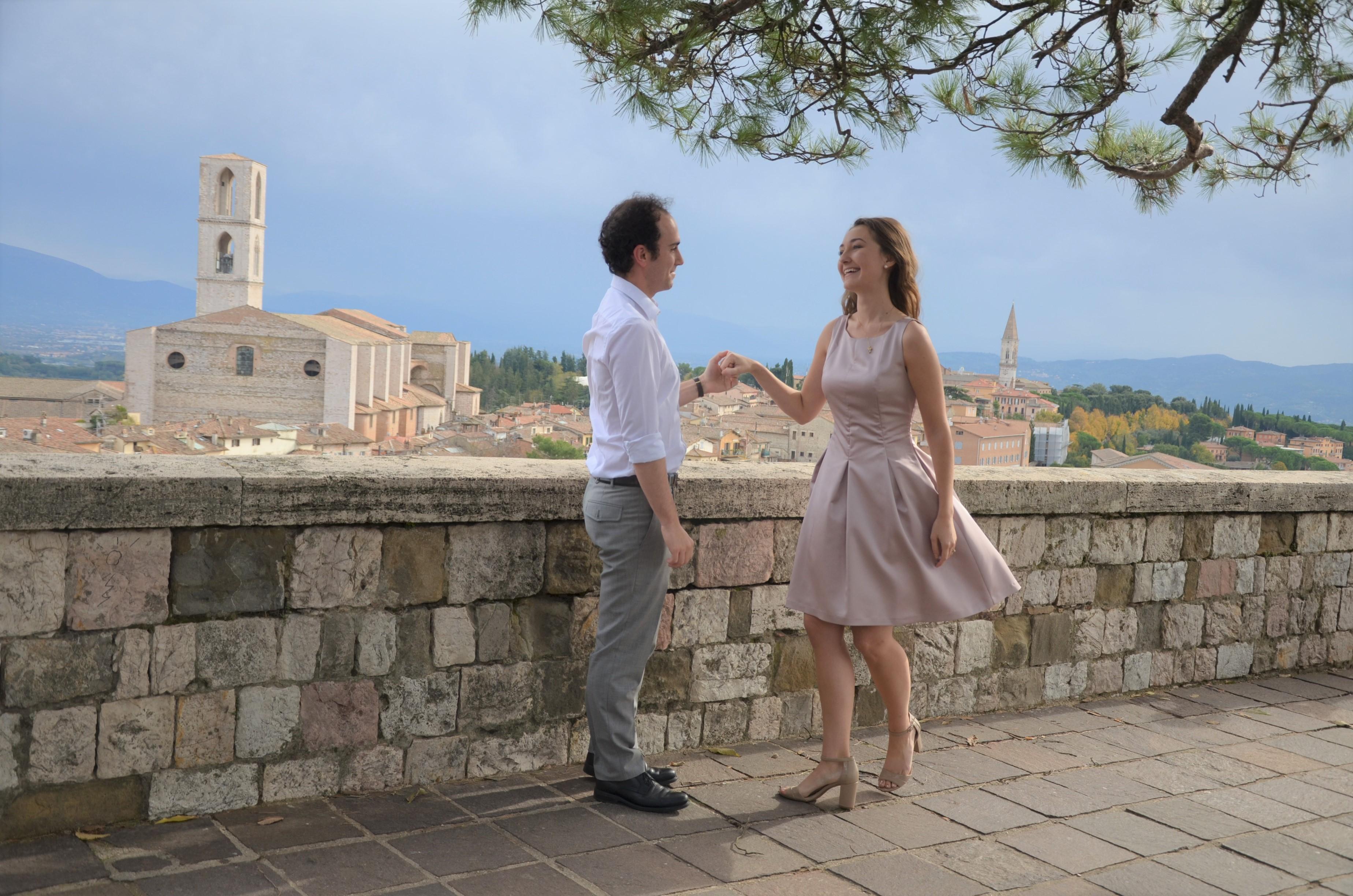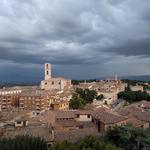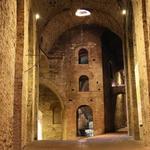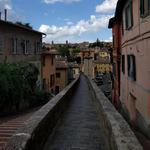Sarah & Damiano
Things To Do


Piazza Italia
The square is full of beautiful benches where you can enjoy the panoramic view of the city below. If you're brave enough to wake up early, the sunrises are magnificent, but the sunsets are also visible from the Piazza. Damiano and Sarah have shared many conversations below the stars sitting on these walls, and this is where Damiano proposed!
Galleria Nazionale dell'Umbria
If you're an art fan, this is not to miss. With over forty galleries housed within the Gothic-style Palazzo dei Priori, the National Gallery hosts works from the 1200s through the 1800s, featuring some of the most famous paintings by Perugino and Pinturicchio.
Sala dei Notari/Palazzo dei Priori & Nobile Collegio del Cambio
Housed within the palace is the "room of notaries," where concerts are often hosted. The building was the seat of the local administrators throughout the Middle Ages and the Renaissance, before the Pope reaffirmed his supremacy over the city. The "Nobile Collegio del Cambio" was where currencies were once exchanged and now displays a wonderful series of fresco paintings by Perugino, which are unique and astonishing and curiously not well-known even to locals.
Abbazia di San Pietro
The site houses a stunning church and an abbey. This place is second on Umbrian soil only to the National Gallery for the number of works of art that it houses in one place. After Italy's unification in 1861-1870, when the rest of the churches in the area were stripped of their artwork by the new state government, this church was the only one allowed to keep its art as a reward for having helped the wounded soldiers of the national army. Be sure to go through the portico and find the medieval garden.
Cattedrale di San Lorenzo
Another gem from an artistic point of view. Here are buried four popes from the time when the conclave was held in Perugia. The most notable is Pope Innocent III (1161-1216), arguably the most important man of his time together with Emperor Federico II. If you wish to experience mass, it is said at 8:30, 10:00, 11:30, and 18:00 on Sundays.

Rocca Paolina
In 1540, during Pope Paul III's pontificate, the Papal Army defeated Perugia in what was known as the Salt War. As a sign of his power, the pope ordered the construction of this imposing fortress, which required the destruction of over 100 houses, churches, and monasteries, whose remains served as construction materials and a foundation for the fortress. During the wars for independence in 1860-70, the patriots destroyed half of this powerful building to scorn the pope, but in its time, it looked something like the Pentagon (you can see historical carvings and maps inside), and it occupied more than half of the entire city. You can enter the fortress via the escalators in Piazza Italia.
Museo Archeologico Nazionale dell'Umbria
If archaeology is more your style, this gallery is worth a visit. The internal grounds are beautiful, and the history it contains is fascinating. Learn about Perugia's foundation from Etruscan settlements through Roman times and the present day.
Trattoria Borgo San Francesco
This is Damiano and Sarah's favorite restaurant. The quality and cost are both unbeatable. Come hungry!
Mediterranea (Pizzeria)
This has been called the best pizza in town! Damiano agrees.
Augusta Perusia Centro Storico
Another great option for gelato, this store is rooted in tradition and sells a variety of homemade treats. Try their chocolate gelato!
Gubbio
If you're looking for a day-trip from Perugia, Gubbio, called the "city of stone" is one option. The city has entirely maintained its medieval appearance. If you feel like experiencing how it was to walk though a city in the Middle Ages, this will be your best pick. You can take a cable car to the top of the mountain to see the city from above. There are no trains, but you can get a bus from Piazza Partigiani.
Assisi
The city of St. Francis, a city of peace, of beautiful, winding streets and more Umbrian views. Our reception will be on the outskirts of the city, so if you wish to tour Assisi, we recommend that you plan a day-trip from Perugia.
Lago Trasimeno
Wonderful panoramic views from all sides of the lake. Possibly one of the smallest villages in Umbria, Monte Colognola, sits above the lake and is worth a visit. There, in 217 B.C., Hannibal completely strategically outsmarted the Romans and pushed them into the lake by attacking from the hills above. This was the closest the Roman Empire ever came to falling before its end.
Gesto
A basement bar with a hipster vibe, often with live music.
Birraio
The study abroad institute where Sarah studied hosted language exchanges here, but Sarah and Damiano were never paired together and spent many evenings wondering if they'd get a chance to talk. Good cocktails and great sangria.

